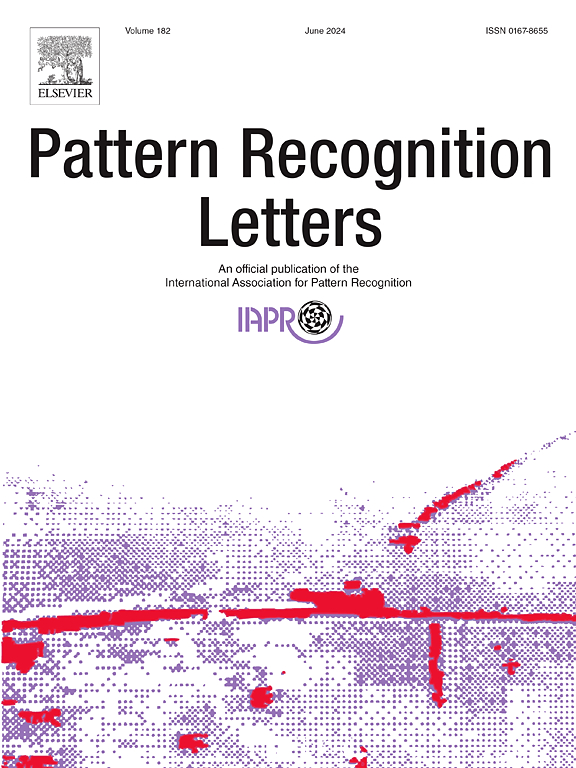Knowledge-sharing hierarchical memory fusion network for scribble-supervised video salient object detection
IF 3.3
3区 计算机科学
Q2 COMPUTER SCIENCE, ARTIFICIAL INTELLIGENCE
引用次数: 0
Abstract
Scribble annotations offer a practical alternative to pixel-wise labels in video salient object detection (V-SOD). However, their sparse foreground coverage and ambiguous boundaries introduce background interference and error propagation, degrading segmentation accuracy across frames. To address this issue, we propose a novel Knowledge-sharing Hierarchical Memory Fusion Network (KHMF-Net) for scribble-supervised V-SOD. The core of our framework is a Hierarchical Memory Bank (HMB) that stores initial scribbles, historical high-confidence regions, and historical full salient maps, enabling long-term spatiotemporal context modeling to suppress error propagation. Additionally, we introduce an Adaptive Memory Fusion (AMF) module to dynamically integrate multi-confidence features, providing reliable guidance during salient mask expansion. To address background interference, we design an Interactive Equalized Matching (IEM) module with reference-wise softmax, ensuring balanced contributions from reference frame pixels. A dual-attention knowledge-sharing mechanism is further proposed to enhance IEM by transferring high-performance attention features from a Teacher to a Student module, improving segmentation accuracy. Experimental results demonstrate that KHMF-Net’s hierarchical memory architecture and effective background-target discrimination enable state-of-the-art performance on three scribble-annotated datasets, even exceeding some fully supervised approaches. The module and predicted maps are publicly available at https://github.com/TOMMYWHY/KHMF-Net.
基于知识共享层次记忆融合网络的涂鸦监督视频显著目标检测
在视频显著目标检测(V-SOD)中,涂鸦注释提供了一种实用的替代方法,可以替代逐像素标记。然而,它们稀疏的前景覆盖和模糊的边界引入了背景干扰和误差传播,降低了帧间的分割精度。为了解决这个问题,我们提出了一种新的知识共享层次记忆融合网络(KHMF-Net),用于潦草监督的V-SOD。我们框架的核心是一个分层记忆库(HMB),它存储初始涂鸦、历史高置信度区域和历史全显著图,从而实现长期时空上下文建模以抑制错误传播。此外,我们引入了一个自适应记忆融合(AMF)模块来动态集成多置信度特征,在显著掩模扩展过程中提供可靠的指导。为了解决背景干扰,我们设计了一个交互式均衡匹配(IEM)模块,该模块具有参考级softmax,确保参考帧像素的平衡贡献。提出了一种双注意力知识共享机制,通过将高性能的注意力特征从教师模块转移到学生模块来增强IEM,提高了分割的准确性。实验结果表明,KHMF-Net的分层记忆体系结构和有效的背景目标识别能够在三个涂鸦注释数据集上实现最先进的性能,甚至超过一些完全监督的方法。该模块和预测的地图可在https://github.com/TOMMYWHY/KHMF-Net上公开获取。
本文章由计算机程序翻译,如有差异,请以英文原文为准。
求助全文
约1分钟内获得全文
求助全文
来源期刊

Pattern Recognition Letters
工程技术-计算机:人工智能
CiteScore
12.40
自引率
5.90%
发文量
287
审稿时长
9.1 months
期刊介绍:
Pattern Recognition Letters aims at rapid publication of concise articles of a broad interest in pattern recognition.
Subject areas include all the current fields of interest represented by the Technical Committees of the International Association of Pattern Recognition, and other developing themes involving learning and recognition.
 求助内容:
求助内容: 应助结果提醒方式:
应助结果提醒方式:


